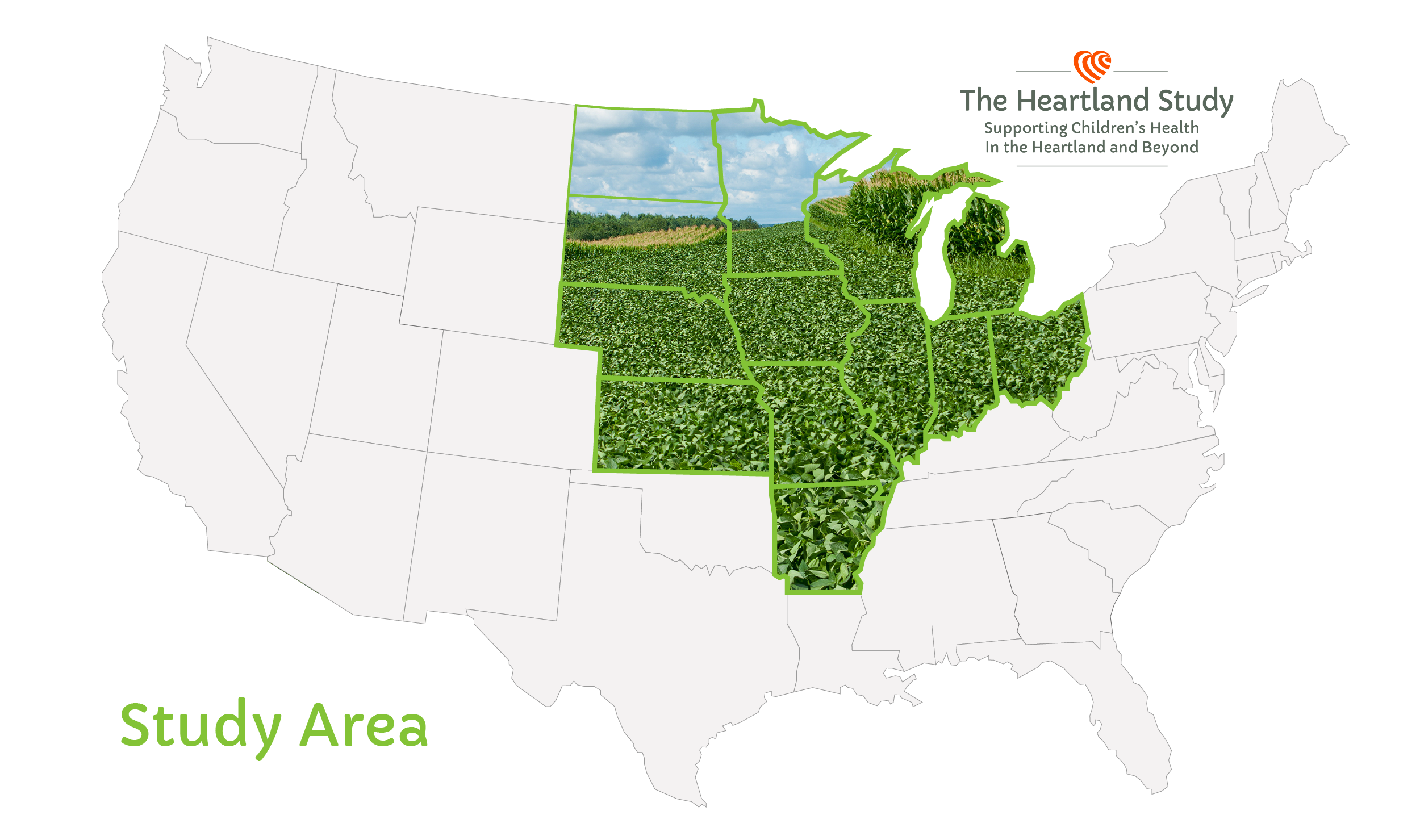
The Heartland Study will pioneer new, critically-needed methods to identify the impacts of prenatal and early life herbicide exposures. It is the first-ever study to track heritable, epigenetic changes resulting from herbicide exposure in a human population.
HHRA’s flagship project, The Heartland Study, is an observational medical research project taking place at hospitals and birth centers throughout the 13-state Heartland region. The Heartland Study is designed to answer critical questions about potential impacts of herbicides on mother and infant health, including whether or not there is a connection between herbicide exposure and birth defects or developmental challenges. This work is crucial due to a rapid increase in the use of several high-risk herbicides that began in 2016 across the US Midwest. The rising use of herbicides shows little sign of slowing, driven by the continuing spread of herbicide-resistant weeds.
What We Will Do
- Enroll at least 2,000 mother-infant pairs living in the 13 Midwestern states.
- Collect ~10,000 urine samples to measure herbicide levels in the bodies of moms and babies.
- Track pregnancy outcomes and the health and development of Heartland Study babies through at least age three.
Why The Heartland Study?



The American Heartland is now the epicenter of rising herbicide use in the U.S. Many moms are conceiving and raising children in rural areas surrounded by vast fields of corn and soybeans. Other families in the Heartland are exposed to herbicides via drinking water, dust and blowing soil, and the air. Nearly everyone in the region ingests multiple herbicides on a near-daily basis through the food they eat and the beverages they drink.
Research has even hinted at an “April-June effect,” where health problems are linked to the three months when the bulk of herbicides are applied in the Heartland. Why? Because moms who conceive during the peak herbicide spray season tend to have a higher incidence of reproductive problems and difficult pregnancies. They also tend to give birth to more pre-term babies (born after less than 36 weeks of pregnancy) and babies who are born under the ideal weight.
Recent science raises new concerns. There is now strong evidence that autism rates may be linked to herbicide exposure during pregnancy. Herbicide exposure can also alter how a newborn’s genes are expressed, leading to abnormal patterns in the development of a baby’s nervous system and brain, or a child’s immune system and reproductive organs. Such gene-expression driven impacts can increase the risk of adult-onset disease through a process known as epigenetics, and even sometimes over multiple generations.
The Heartland Study will be the first large, systematic clinical research project to assess whether herbicides are leading to epigenetic disruptions that are playing a role in the health of people living in Heartland states.
Our science is guided by Heartland Study and HHRA scientists, our research partners, and our Science Advisory Board. Our mission is to synthesize toxicology, epidemiology, obstetrics, and genomics in search of new ways to determine the role of herbicides, if any, in the frequency and severity of observable adverse birth outcomes and problem pregnancies.
Our hope is that we can generate knowledge that guides changes in the ways farmers control weeds by focusing new science on the most important outcome: healthy babies that develop normally and retain their full potential for productive and healthy lives.
